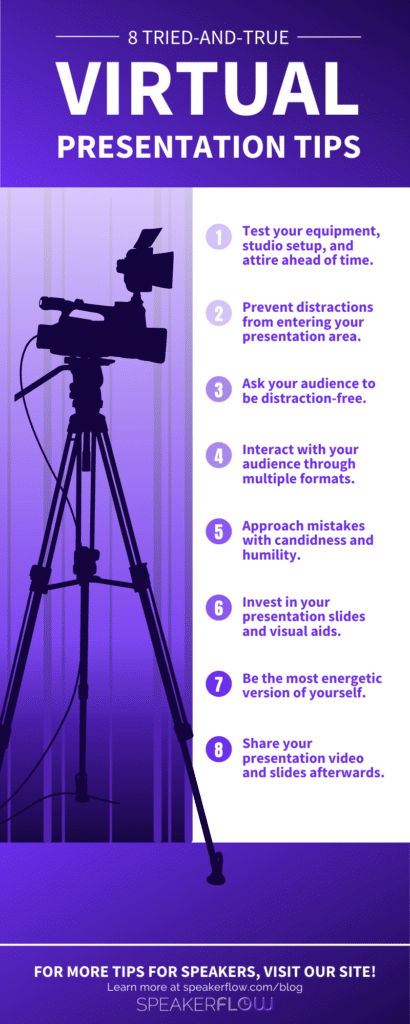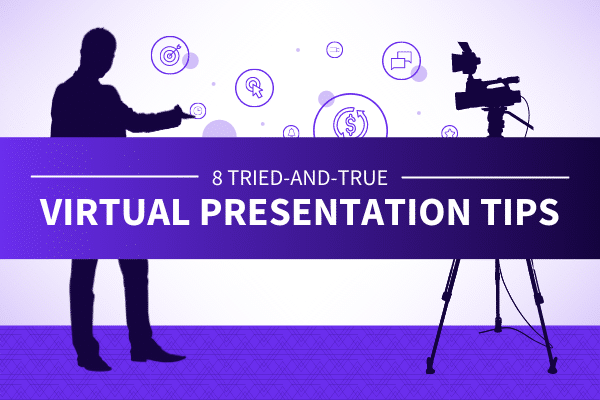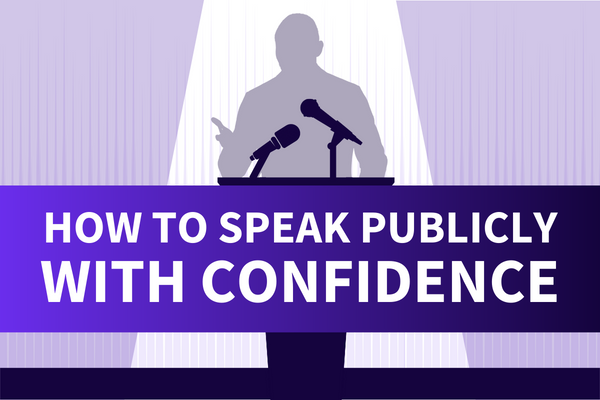As virtual events continue to grow in popularity, competition between virtual speakers is on the rise. Maybe you’re up against other industry experts, looking to launch into speaking. Maybe you’re in a race with your speaker colleagues to see who can build their virtual speaking reputation the fastest. But, regardless of your focus industry or your depth of speaking experience, the better you’ve adapted to digital production – and the more virtual presentation tips you know – the better your chances are of success. That’s what we’re here to talk about today.
In this guide, we’ll cover eight virtual presentation tips guaranteed to help you wow your next virtual audience. While some are expected (like avoiding distractions in your studio), others are more surprising, as you’ll see shortly. Nevertheless, all of these tips have been tested and approved by virtual speakers around the world, so you can learn from their collective experiences simultaneously.
Additionally, besides these tips, we’ll also touch on a few resources that can help you put them into practice. After all, what good is advice if you can’t put it into action, right?
Having said that, let’s dive in! 🎉
- Test your equipment, studio setup, and attire ahead of time.
- Prevent distractions from entering your presentation area.
- Ask your audience to be distraction-free.
- Interact with your audience through multiple formats.
- Approach mistakes with candidness and humility.
- Invest in your presentation slides and visual aids.
- Be the most energetic version of yourself.
- Share your presentation video and slides afterwards.
Test your equipment, studio setup, and attire ahead of time.
First and foremost of our virtual presentation tips is pre-event testing. As you’re organizing your home studio, it’s important to plan each element ahead of time so you can be sure they work together harmoniously. This includes – but isn’t limited to – your background, lights, sound equipment, internet connection, and clothing. Although each may seem uncomplicated on their own, combined they can contribute positively to your presentation or distract from it.

For example, let’s say you plan to wear a dark suit on the day of the presentation. Sure, that alone may seem like a simple decision. But, without testing, how can you make your lighting setup doesn’t make the suit look washed out? How can you be sure your suit doesn’t blend into the background on camera? And how can you be certain that there aren’t aspects of your suit or studio setup that distract from your words?
All of these questions are important to answer well before the day of the virtual event so that, when that day comes, you can focus instead on your audience and speech content. Essentially, you want to be sure your background isn’t distracting, your clothes (and makeup, if applicable) show up well on camera, you’re not too close or too far from the camera, and you know how to use your tech.
You also want to be sure your internet connection is solid and that your presentation is appropriately timed. The last thing you want to do is run out of time when you intended to leave space for questions or a group activity at the end of your presentation. Plus, the more polished and well-practiced you are, the more easily you’ll be able to tackle any unavoidable issues that pop up.
Prevent distractions from entering your presentation area.
The second virtual presentation tip in our list is a simple one: limiting distractions. Within your home or office, think about all of the things that pull you away from work on a given day. Are you working on laundry or cooking between work tasks and meetings? Are you balancing your professional schedule with those of your kids or dependent relatives? Or are you speaking on a part-time basis and coordinating your virtual speaking calendar with your primary job?
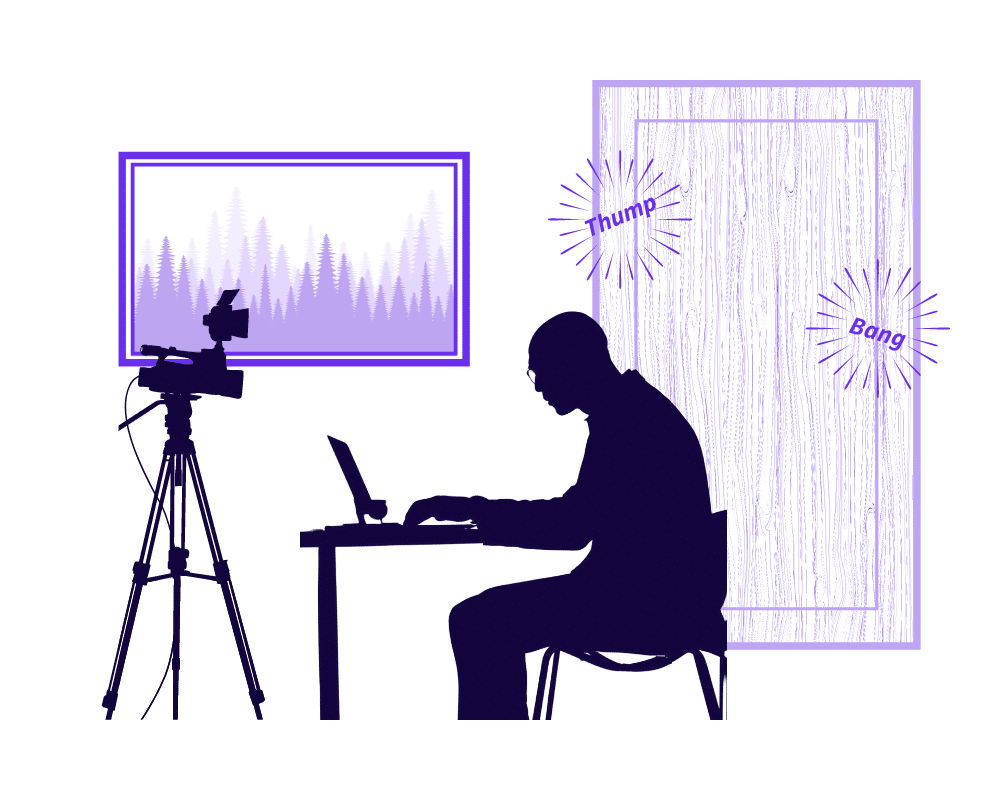
In my home office – and with many of SpeakerFlow’s clients – these questions are all true, and a quiet office can turn rowdy in minutes. To avoid these distractions in your own office, it’s vital that you tackle each one before your presentation. This includes the following:
- Silence your computer, phone, and tablet, especially any pop-up notifications that could appear on your presentation screen.
- Organize short-term care for any kids or pets that usually need your attention. For kids, this can be a family member, partner, or babysitter. For pets, it can be a “doggy daycare” facility or a dog walker. You know your children and your furry friends best, so no matter what you do, make sure they’re cared for while you’re unavailable for a few hours.
- Eliminate distracting tasks. If you’re distracted by a need to clean your studio, for example, do it ahead of your event.
Whatever distracts you – whether it’s kids, pets, partners, technological notifications, you name it – plan ahead so they won’t appear during your presentation. Even if it’s a topic you know backward and forward, every virtual presentation should have your undivided attention so you can focus and be confident you’re communicating clearly.
Ask your audience to be distraction-free.
On a similar note, virtual presentation tip #3 is about distraction limitation, too, but as it applies to your audience. Chances are, at least once during the 2020 coronavirus pandemic, you ended up in a Zoom presentation, and, if you’re like me, it was incredibly tempting to look away. You may have thought about your plans for the evening, your schedule tomorrow, the laundry you forgot to fold, or your kids in the next room. Understandable but distracting, right?
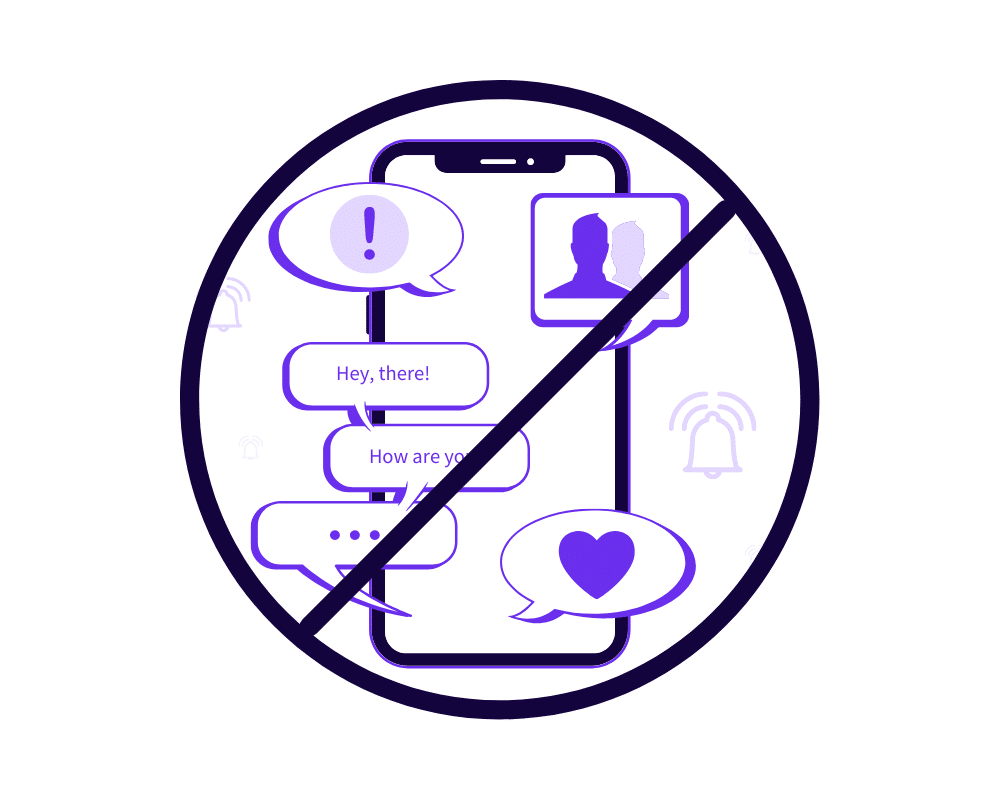
For audiences in your virtual presentations, the same distractions apply. Even if they’re excited to hear what you have to say, they have other things to worry about, too, not to mention that virtual presentations lack the human interaction of live ones. This makes engagement much more difficult.
That said, despite these challenges, audience engagement isn’t impossible, and there are a handful of ways to politely ask your audience to limit distractions around them. Below are a few recommendations from within the SpeakerFlow speaker network.
- Ask that all cell phones be put away or silenced. Just like in a movie or a live keynote, it’s polite to fellow audience members and to you.
- If you have control of audience participation, mute all audience members’ audio. If you don’t, connect with the event organizer beforehand so they can manage it for you. This omits distracting sound from audience surroundings.
- If possible, ask that all audience members have their cameras on. Even if you can’t actually see them, this reduces the chance they’ll blatantly disengage.
Obviously, you can’t control all audience distractions, but it’s always worth asking your audience and your event organizer to commit to a distraction-free presentation. That way, even if their attention drifts, you can rest assured it was out of your control.
Interact with your audience through multiple formats.
Speaking of engagement, the next of our virtual presentation tips relates to formatting, namely using more than one format to boost audience interest. In recent years, studies have shown that, during a live presentation, audience members tend to tune out after about 10 minutes. That’s a remarkably short time frame in which to hook their interest, and, in a virtual setting, that period can be even shorter.
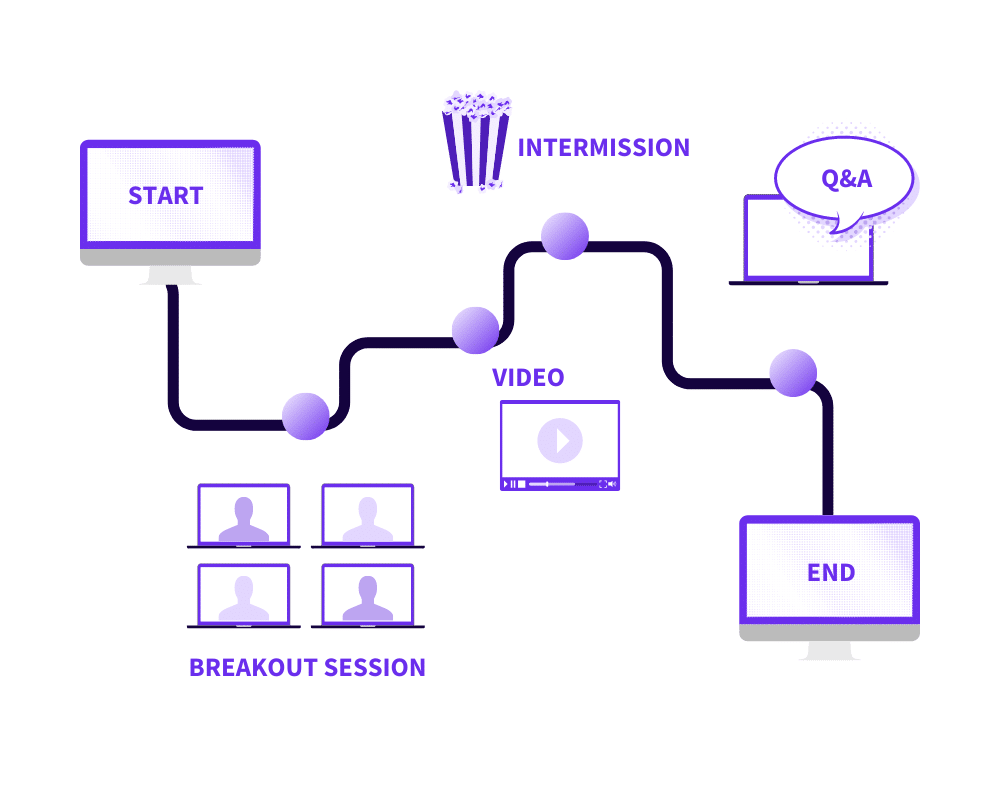
According to speaker and consultant Bob Kantor, one solution is to break the audience into virtual groups. To hear him tell it:
“I’ll often do a short presentation to everyone with slides… then provide some discussion questions for people to answer on their own for 3-5 minutes, and then send them into breakout groups of 3-4 people for about 15 minutes to explore their answers. Finally, I bring them back into the large main group and invite anyone to share their insights… I’m almost always able to add another two cents, so that I can still make the points I’d planned to even with all that interaction.”
Kandor also credits a presentation assistant with helping him stay tuned to audience questions or thoughts, saying, “Once you get into larger groups, people tend to start using the platform’s chat feature a lot… With an assistant, they can watch the chat and jump in with questions and comments when they see something you should address or know.”
As you plan the formats of your own virtual presentations, keep these tips in mind. Besides speaking, try incorporating live polling, Q&A sessions, a virtual game, or live chat and keep note of which formats best engage your audiences. Then, make them part of your routine in presentations moving forward.
[hubspot type=cta portal=5815852 id=4423b6b8-d7d0-4f03-b792-184db7c3284b]
Approach mistakes with candidness and humility.
Fifth of our virtual presentation tips is staying humble. Despite all your preparation, sometimes your presentation will hit a snag anyway. It might be a glitch in your internet connection or a problem with the virtual event platform itself. But, in any case, any problem or mistake can quickly snowball if not handled well.

So, what’s the best way to handle a mistake? According to many speakers, the answer is three-fold. First, simply smile or laugh about it. This shows that you’ve accepted it and relieves any tension in the virtual “room.” Second, make a joke, so you can relate to your audience and bond a bit over the inconvenience. And, lastly, don’t linger on it. You’re there to present so, once the mistake is fixed, it’s time to get back to business.
Comedian and speaker Gary Ware knows this better than most. As a trained comical improviser and theatre performer, when it comes to making mistakes, his advice is use each mistake as an opportunity to improve. In his words, “Experiment and adjust… It’s not a rinse and repeat how it might have been when talks were in person. You need to be open to experimenting with something, and be ok with failing. If you are open and honest with your audience, they will forgive you. This is the perfect time to do this because no one has [virtual presenting] figured out yet.”
Summarily, in an ideal world, mistakes don’t happen. But, when they do, the best way to keep them from derailing your presentation – and connect with your audience in the process – is to laugh at yourself a bit. No matter how experienced a virtual speaker you are, mistakes and problems happen to the best of us, but only the best speakers take them in stride.
Invest in your presentation slides and visual aids.
Moving on, next in our list of virtual presentation tips is using visual aids. It’s no secret that including images in teaching materials has a long list of positive impacts, both for the educator and the student. For one thing, visual aids help boost audience comprehension, as they provide visual learners with a way to better understand your message. For another, they boost retention, as joint visual and auditory components engage multiple aspects of the brain. Both of these benefits ensure that your presentation is impactful and audience members are able to enact your message long after you’ve left the virtual stage.

Additionally, from the event planner’s vantage point, polished visual aids make you look professional and well organized. Since they’re generally paying you a few thousand dollars to present for their audience, this positive impression is essential if you intend to ask for reviews or referrals post-event.
To level up your presentation’s visual aids, there are a few tips, tricks, and tools to keep on hand. Below are our top recommendations.
- Coordinate your slides with either your branding or that of your client. If you don’t want to handle this yourself, I suggest hiring a graphic designer (99Designs is great for this!) to create a set of slide templates for your to use repeatedly. If you do want to design your own slides, Canva or Visme are other options.
- Keep text on your slides clean and simple. Stick to a few sentences, bullet points, or a single large quote. Including too much text makes it hard to read.
- Balance text and visual elements. If you can include an illustration, diagram, or photo to make text more memorable, do it.
- Animate where appropriate. Animations can be eye-catching if they’re simple but too many can be overwhelming or distracting.
Be the most energetic version of yourself.
Virtual presentation tip #7 is all about energy. As you’ve probably already guessed, because virtual audience members can easily be distracted, engagement is key, and one of the easiest ways to boost engagement, as the speaker, is to be your most energetic self.

To do this, we turned to DJ, emcee, and award-winning entertainer Rob Ferre. As a speaker, Rob is known for his seemingly endless energy and his dedication to keeping audiences excited and engaged. He was also one of the first speakers in the American speaking community to consistently seek out virtual events.
To hear Rob tell it, keeping the energy up can start with something as simple as your posture. As he mentioned in his appearance on our podcast, “I always tell people if you’re going to present, do it standing up. Your energy is so much different than when you are sitting down. How often are you presenting sitting down? For those who are able to stand, stand. If you can’t stand, find where you can find your best energy.”
Another source of energy insight is speaker and Unbounce co-founder Oli Gardner. Similarly to Rob, Oli recommends greater-than-average enthusiasm. However, he also stresses the importance of remembering your setting. In his words, “All in all, it’s about finding a way to transfer your passion and energy through the screen – which can be hard when you have no feedback for the audience. You’ve just got to believe there are thousands of people laughing along with your dad jokes.”
In short, although your virtual presentations should be authentic, they also require exceptional energy in order to succeed. Remember: distractions are all around your audience, so energy is a fundamental way to keep them engaged.
Share your presentation video and slides afterwards.
Last but not least of our virtual presentation tips, always touch base with the event organizer when your presentation is over. In many cases, they’re considering many of the same questions that you are in order to see a return on their investment. How are you going to keep their audience engaged, for example? How can they ensure audience members leave the event knowing what to do next? What can they do to prevent hiccups before, during, and after your presentation is over?

Helping event organizers answer these questions – and providing made-to-order solutions for their team – is a sure way to turn them into a happy customer and a source of future referrals. To accomplish this, first, share your presentation slides and video after it’s over. This gives the organizer a chance to share the presentation with anyone that wasn’t able to attend or with anyone who had to leave mid-presentation.
Second, share any add-on products or services you agree to in your initial contract. These can include consulting, group coaching, online coursework, workbooks, copies of your book – anything that extends their audience’s learning.
And, lastly, always ask for feedback. Your goal is to provide all the post-presentation resources they need to maximize the impact of your presentation. But, if you missed something, the least you can do is ask how you can improve. That way, you can do better in the future (and, hopefully, book repeat gigs with the same client).
Past this point, it’s up to you to build your own list of virtual presentation tips as you gain experience. In the meantime, for more information about virtual speaking, join our University or book a discovery call to learn more. 👍
